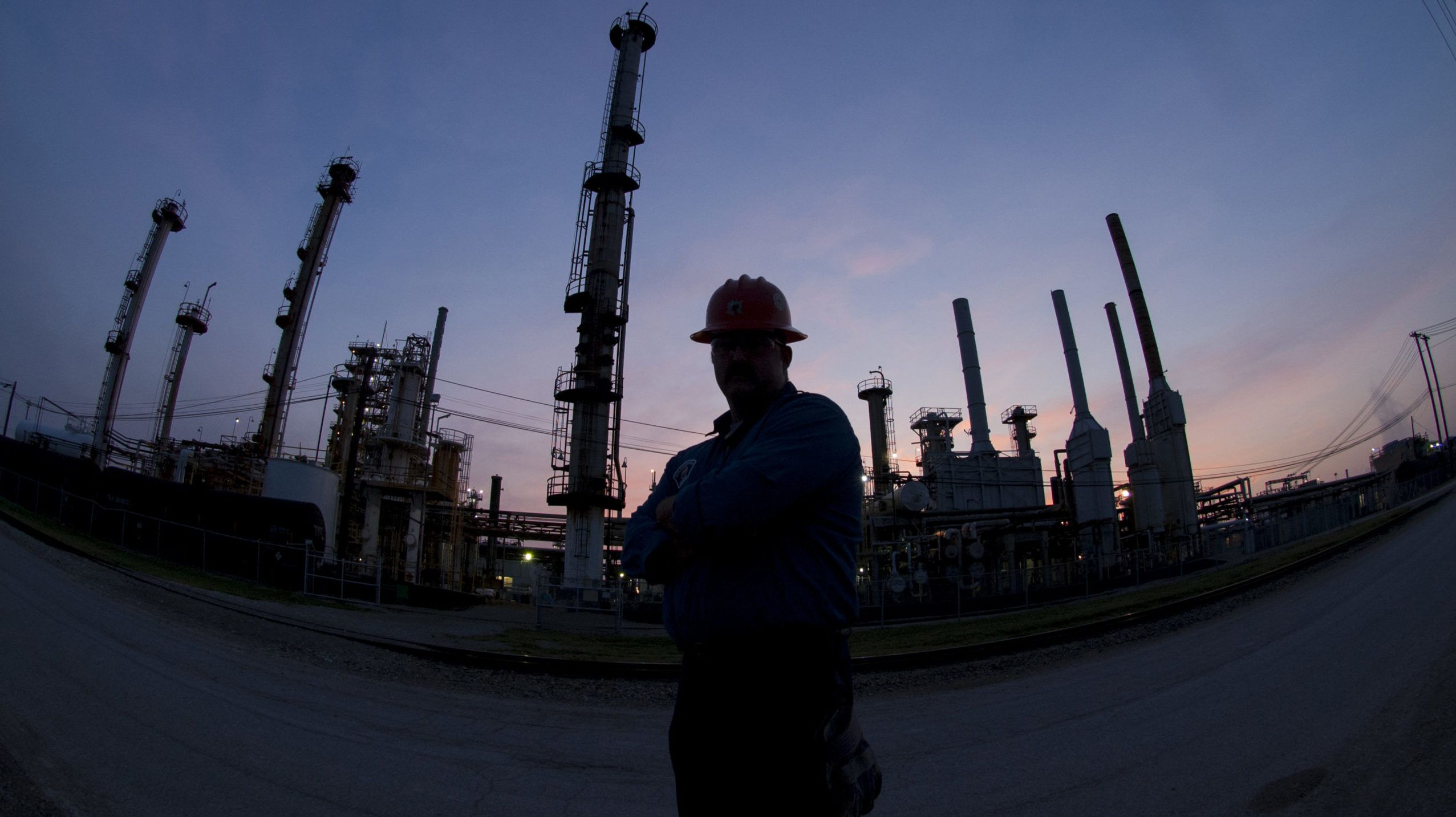
While there has been considerable discussion about the absolute greenhouse gas emissions arising from the activities of Canada’s oil sector, much less attention has been paid to reductions in greenhouse gas emissions intensity that have occurred within the sector since the turn of the 21st century.
Emissions intensity is determined by dividing the amount of absolute greenhouse gas emissions by some unit, such as GDP, population, energy used, or barrel of crude oil produced. Canada’s GHG emissions intensity, expressed in these terms, has been in noticeable decline over the past two decades. Evaluating these trends in emission intensity is critical to gaining a better understanding of Canada’s overall environmental performance.
In a new research brief which I co-authored, we used the year 2000 as a realistic starting point to evaluate emissions intensity trends in Canada and the Canadian oil sector because it incorporates the dramatic increase in oil sands production.
Between 2000 and 2018, oil sands production increased from about 600,000 barrels per day to over 2.9 million barrels per day, or nearly five times more. Yet, even with this significant increase in oil sands production, emissions intensity in Canada’s oil sands sector has fallen by nearly 35 per cent since 2000, extrapolating from direct emissions numbers from Environment and Climate Change Canada,
Upstream conventional liquid hydrocarbons production (which includes conventional crude, condensates, pentanes plus, propane, butanes and ethane, but not the oil sands) has increased from nearly 2.1 million barrels per day in 2000 to over 2.3 million barrels per day in 2018, or by about 11 per cent. Yet, the emissions intensity of upstream conventional liquid hydrocarbons has fallen by over 29 per cent since 2000, extrapolating from data from Environment and Climate Change Canada and the Canadian Association of Petroleum Producers.
In our research, we also found that Canada’s mining, quarrying, and oil and gas extraction sector compares favourably with other industrial sectors in Canada when it comes to emissions intensity. In 2017, the emissions intensity of the mining, quarrying, and oil and gas extraction sector in Canada was 62.7 tonnes of carbon dioxide equivalent (CO2e) per terajoule of energy used in extraction. That stacks up well against other sectors such as construction (68.7 tonnes), iron and steel (69.4 tonnes), forestry (73.2 tonnes) and cement (73.6 tonnes of CO2e per terajoule).
Fuel combustion emissions intensity in Canada’s industrial sector, which includes the oil and gas extraction sector, is also falling, and is comparable with some other energy-producing and consuming countries.
According to International Energy Agency data, between 2000 and 2017, GHG fuel combustion emissions intensity in Canada’s industrial sector fell by 42 per cent. As of 2017, GHG fuel combustion emissions intensity in Canada was still higher than in Australia, but lower than in India, Iran, Oman, Qatar, Russia, Saudi Arabia and the United Arab Emirates.
What about emissions intensity in Canada’s oil sands sector, a subject of intense scrutiny when talking about Canada’s ESG performance? According to a July 2020 report from IHS Markit, , “the overall weighted average of the upstream greenhouse gas intensity of Canadian oil sands is down by about 20 percent when compared with 2009.”
Also, looking forward, IHS Markit also projects that, by 2030, “the deployment of commercial and near-commercial technologies and efficiencies could result in a 17 to 27 per cent reduction in the greenhouse gas emissions intensity of steam-assisted gravity drainage (SAGD) operations (which accounted for 45 per cent of oil sands supply in 2017) and a 15 to 20 per cent reduction in the greenhouse gas emissions intensity of mined oil sands.”
As Natural Resources Canada has recently noted, “more efficient industrial processes and technological improvements have all contributed to decreases in Canada’s emissions intensity.”
As emissions intensity in the Canadian oil sector continue to decline, the rest of the world will begin to take notice. This should result in opportunities for Canada to become a hub in the export of new and emerging greenhouse gas emissions reduction technologies. Not only will Canada continue to deal with its 1.6 per cent share of total global emissions, it will be able to assist the rest of the world in dealing with their 98.4 per cent share of total global emissions.
In conclusion, our analysis of credible data sources show the improvements in emissions intensity made by Canada and its oil sector since 2000 are real. This is so even with the dramatic increase in oil sands production over the past two decades.
Improvements in the oil sector’s emissions intensity within the context of Canada’s already better record on matters such as human rights in environment, social and governance rankings (‘ESG’ where the “S” is for social issues in that troika) versus other energy-producing and consuming countries is positive and needs to be more widely known.
~
Lennie Kaplan is the Chief Research Analyst at the Canadian Energy Centre, an Alberta government corporation funded in part by taxes paid by industry on carbon emissions. He is co-author of “Evaluating the Canadian Oil and Gas Sector’s GHG Emissions Intensity Record since 2000.”